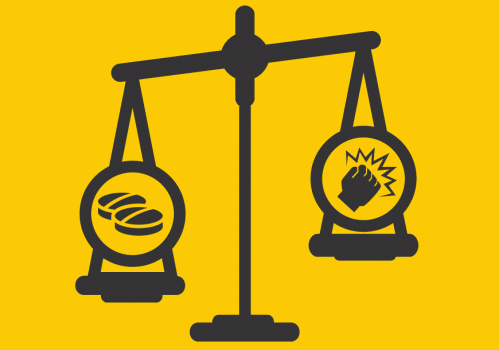(Medical Xpress)—A new University of Michigan Injury Center study recently found a link between misuse of prescription drugs and physical violence among dating partners.
Alcohol and other drugs have been a well-studied health concern among youth with a history of substance use. Previous studies asking youth about daily use over the course of a month show that alcohol and drugs are more likely to be used on days in which violence, both dating and nondating, occurs than on days when there was no violence.
This latest research indicates a connection with misusing prescription sedatives and opioids prior to incidents of dating violence, which many youth or adults may not think of as a risk factor for dating violence.
"Without the alcohol or prescription drugs involved, they simply might walk away from a potentially violent situation," said Quyen Epstein-Ngo, a fellow at the U-M Injury Center and researcher at the Institute for Research on Women and Gender. "The alcohol and other substance use may be the tipping points."
The study examined substance use—prescription sedatives and opioids—immediately preceding dating violent conflicts on the day of the conflict among high-risk urban youths. Data was collected from 575 participants ages 14-24 in the Flint Youth Injury Study, funded by the National Institutes of Health and supported by the U-M Injury Center, which looks at substance use and violence among youth treated in an urban emergency room. They reported substance use and instances of violence over a12-month period.
Both men and women reported that the argument that led to the physical dating violence occurred due to their anger over other things, being in a bad mood, jealousy or as part of an argument about sex.
Given the long-term mental health consequences and potential for physical injury, Epstein-Ngo suggests a need to help teens with healthy responses to conflicts (communication, problem solving) and anger, and to recognize the potential for arguments to escalate when using drugs and alcohol, including prescription drugs.
Women were more likely to be involved in dating violence, and males were more likely to be a part of nondating violence. From 1,262 incidents reported in the study, substance use occurred immediately prior to 44 percent of conflicts. About 50 percent of the dating violence incidents involved drug use.
"Our findings indicate that interventions that address violence among youth should address substance use and psychological factors, as well as be tailored by type of violence—dating versus non-dating—and by gender," said Epstein-Ngo, the study's lead author.
More information: Quyen M. Epstein-Ngo, Maureen A. Walton, Stephen T. Chermack, Frederic C. Blow, Marc A. Zimmerman, Rebecca M. Cunningham. "Event-level analysis of antecedents for youth violence: Comparison of dating violence with non-dating violence, Addictive Behaviors." Volume 39, Issue 1, January 2014, Pages 350-353, ISSN 0306-4603, dx.doi.org/10.1016/j.addbeh.2013.10.015.
Provided by University of Michigan


















